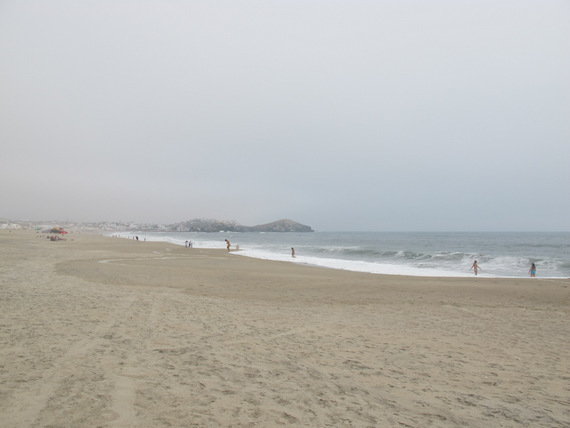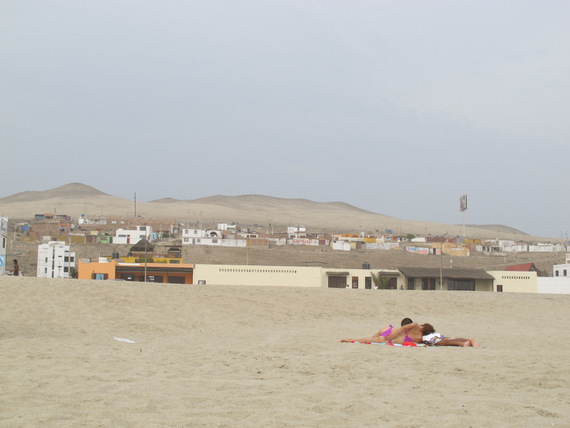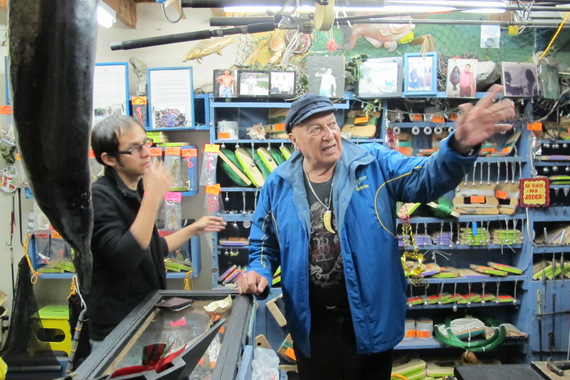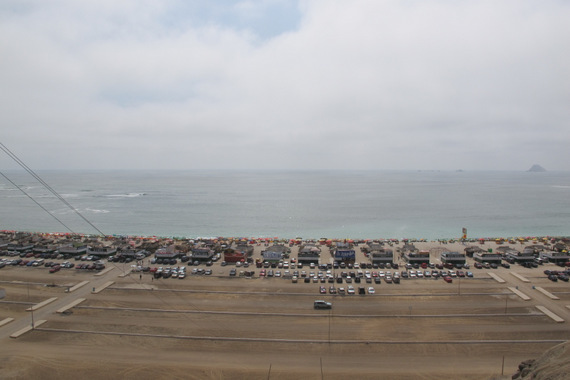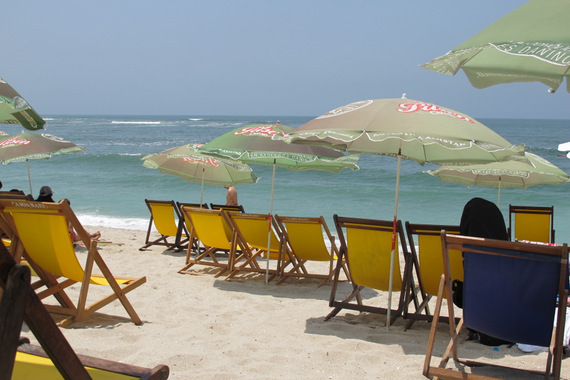I'm standing on the big, slippery breakwater rocks on the El Silencio beach, some 20 miles south of Peru's capital, Lima. I'm fishing for Tramboyo, a hideous yet delicious fish that lives on the mollusks sticking to the piled-up rocks beneath the surface.
This time of year, it should have been sunny and hot, a cloudless blue sky covering my view of the Eastern Pacific. Although the sun is nowhere to be seen today, it still burns. I'm surrounded by a mixture of tropical moisture and ocean spray.
Manuel is throwing his line from some 30 feet away, but I can plainly hear his cursing over the breaking of the waves. He's been fishing his entire life, at seventy three he still does. Shortly after I met him five years ago, in his small shop with fishing gear, he taught me the basics. After some lessons involving meters of nylon, annoyingly sharp hooks, several bottles of rum and hours of listening to Hector Lavoe and Los Compadres, I joined him on one of his trips to the South. He became one of my best friends here and one of the most interesting people I have met in my life.
"If you want to live long, get close to nature, goddammit!"
I'm glad he's not shouting at me, as he does sometimes when I clumsily throw out my line and it gets entangled with his.
Lima's winters are known for a thin grey blanket of low, rainless clouds. Therefore in summer, from December to March, those in Lima that can afford it go to the beaches. The further south, the fancier. Travel costs are one of the easier ways to obtain social segregation. El Silencio beach is considered middle class. Public transportation gets you there in a few hours, but it's much faster if you have a car. The ceviche served in the cabins on the beach is ludicrously overpriced for what you get, but nothing beats a ceviche and a cold beer on the beach. Manuel always chuckles when looking at the menu, as he knows what kind of fish you'll actually get served instead of what it says - especially if you order one of the more expensive ones. Most people my age, when they go south, go surfing in the afternoon and to clubs at night. When we arrived at 8 AM, various zombie-like clubbers were wandering by the highway, waiting for a bus or taxi to get back home.
"I have been saying this for more than thirty years now: we're destroying nature and with that, causing our own demise!"
Peru´s sustained strong economic growth over the last two decades has resulted in a construction boom along the coast. It hasn't been planned and since there is very little regulation when it comes to building anyway, it's all quite messy: a chaotic mixture of white luxury condos with swimming pools twenty meters from the ocean, light-brown adobe shacks with palm tree leaves for roofs and plain ugly, two-story brick building painted in whatever cheap color you like. Combined with the grey of the sky, the dark reflection of it in the water and the yellow-brownish sand (sparsely covered in trash) it turns into a rather depressing color palette. As it never rains, the streets in these coast-desert areas are rarely washed clean, and because of the constant humidity, a subtle stench is always present, like an unwanted memory.
Urbanization is not only demolishing the view, it's destroying the last of what remains of the already fragile beach ecosystems. In a sense, a view on this coastline is a metaphor for the Peruvian economic success story.
From where I am fishing I can see groups of friends on the beach fighting their hangover with some more beer, families quietly spending their Sunday morning together, and local poor people selling sunglasses, ice cream or books. The waves, an occasional seagull cry and Manuel's shouting are all I hear. In Peru, loneliness can creep up on you very unexpectedly.
After several hours we still haven't catched anything. Small fish have been eating all our bait; I haven't felt the strangely satisfying pull of a big Tramboyo struggling to get loose once. Manuel is just as disappointed. He starts reminiscing about life fifty years ago, before the big fisheries shamelessly went on a killing spree and virtually annihilated the anchovy, what he calls the pasture of the seas. Now there's only a small fraction left.
The nostalgia in his testimonies is contagious. As we're walking back across the beach I'm reminded of photos of my grandparents taken in the sixties, on a sailboat on a sunny day. I picture the water beneath the blue surface crawling with fish.
Due to overfishing, climate change and deteriorating coastal ecosystems, the pressure on Peruvian fishing activities keeps increasing. At the same time, along with the economy, more and more people go to the southern beaches, the restaurant sector is flourishing and big supermarkets are bringing consumption diversity to ever more remote parts of the country. How long is all of this going to last?
As we drive back to Lima, it's still grey and warm. The sand and salt scratch my burned skin with every move. I drop off Manuel at his shop, probably for the last time. He's going to sell it and spend his retirement in El Silencio. Away from roaring traffic and sky-rising concrete. Closer to sea.
"Closer to nature."
